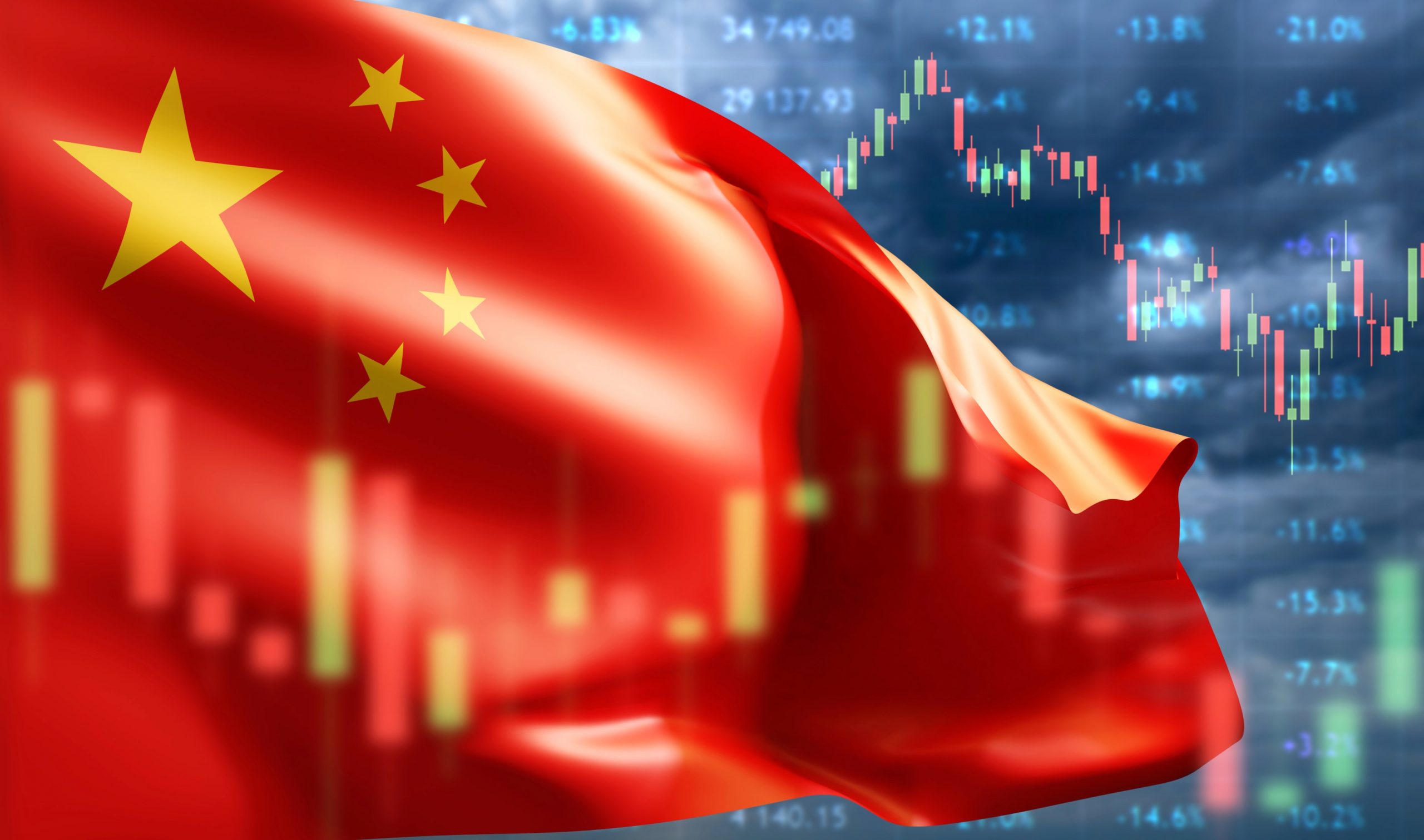Cover Story: China’s Stock Market Roars Back to Life — But Can It Outrun Economic Gravity?
By Wang Juanjuan, Wu Yujian, Quan Yue, Ding Feng, Xia Yining and Han Wei


A blistering rally has lifted Chinese stocks to their highest levels in nearly a decade, pushing total market capitalization above 100 trillion yuan ($13.9 trillion) for the first time. The surge has sparked a fierce debate over whether this is the dawn of a durable “slow bull” market or merely a speculative, emotion-driven upswing detached from grim economic realities.
The euphoria is palpable, recalling the retail-driven surges of earlier market frenzies. Wang, a brokerage researcher, said it felt like déjà vu when his massage therapist asked him for stock tips. “Isn’t this the flavor of a bull market starting, with ‘newbies’ rushing in?” he asked.
This sentiment has propelled the benchmark Shanghai Composite Index from around 3,000 points on June 23 to 3745.94 on Aug. 18, highs not seen in a decade amid record trading volumes. Nearly 4,000 stocks rallied that day, with total turnover reaching 2.81 trillion yuan.
Yet this exuberance coincides with a darker backdrop: weak corporate earnings, falling consumer confidence and troubling macroeconomic data, prompting many to question the rally’s foundation.
Optimists argue that unlike past short-lived rallies, this one could mark the start of a sustainable uptrend. They point to strong policy support and broad participation by institutional investors — including insurers to private equity funds — as signs of a healthier ascent.
The market is approaching a “positive feedback loop,” said Li Lifeng, chief strategist at Huaxi Securities Co. Ltd., where steady gains draw household money into stocks, reinforcing an upward climb.
Years of sluggish equity markets and a property downturn have seen households amass record savings, with deposits topping 162 trillion yuan by the end of June.
“In an era of falling interest rates, we could see more savings flow into equities,” said Liang Li, general manager of Shanghai Ridge Capital, a private equity firm.
Non-bank deposits increased by 1.4 trillion yuan in July, much of it earmarked for equities, wealth-management products and fixed income, according to a note from China CICC Wealth Management Securities Co. Ltd.
Still, veterans warn the rally may not last. A Beijing brokerage manager said recent inflows pale in comparison with the 2024 boom. “I haven’t seen a significant large-scale transfer of deposits,” he said. “On the contrary, clients are asking if the rise is a bit too high.”
The disconnect with the underlying economy is glaring. In July, China’s consumer price index was flat, while new credit growth turned negative for the first time in 20 years. Corporate fundamentals look shaky too: of the roughly 1,600 A-share companies that had issued interim earnings forecasts by mid-August, just over a quarter predicted profit growth.
Some warn that bullish psychology itself could sow the seeds of reversal. “As long as there’s a general expectation of a ‘slow bull’, it often evolves into a ‘fast bull’ or a ‘mad bull,’” said a chief investment officer at a mid-sized insurer.
For skeptics, the economic cycle doesn’t justify optimism. “To say the A-share market is already in a ‘slow bull’ might be a contradiction, because that isn’t supported by the financial data,” said Xiong Peng, a global macro trader and member of the Pangoal Institution, a think tank.

With sentiment running high, analysts say regulators now face a critical window to advance long-delayed reforms. The consensus is that to avoid the familiar “short bull, long bear” cycle, China must improve the quality of listed companies and strengthen the stock market’s role in capital allocation.
Policy-driven rally
“This is clearly a capital-driven market pushed by policy,” said a source at a top-tier brokerage, pointing to state-backed liquidity injections.
After the nosedive triggered by the Trump administration’s tariff threats in April, state investors led by Central Huijin Investment Ltd., a subsidiary of sovereign wealth fund China Investment Corp., stepped in and snapped up large amounts of exchange-traded funds (ETFs).
In just two trading days, Aug. 7 and 8, a net 175.5 billion yuan flowed in stock ETFs — the largest two-day inflow since October 2024.
The market’s real turning point, however, arrived in June, when the central bank turned decisively toward easing. It cut three key policy rates — which guide liquidity costs for financial institutions — by 10 basis points, signaling a strong pro-growth stance. The move, combined with easing geopolitical tensions, gave sophisticated local traders the green light.
Speculative appetite exploded. Margin debt breached the psychologically important 2 trillion yuan mark, and continued to climb, climbing to 2.1 trillion yuan by Aug. 18. New margin accounts trading also reached their highest since mid-April.
“Margin financing is the smart money, sensitive to fluctuations,” said a Shanghai-based private fund manager. Its surge has increased short-term momentum.
Among institutional investors, quantitative funds have emerged as the clear winners and primary engine of growth. In the first half of the year, they accounted for 45% of all new private securities fund registrations. Their performance has trounced that of their human counterparts: As of early August, quant stock funds had posted an average year-to-date return of 24.4%, far outpacing the 16.5% average gain for traditional stock-picking funds, according to Simuwang.
“You have to follow the policy and get in early for an A-share bull market,” said one fund manager, who recently shifted heavily into stocks.
But two key groups remain largely: retail traders and foreign investors.
Individual investors, scarred by the brutal 2024 boom-and-bust cycle, are more cautious this time around. While net purchases by small-lot traders rose 39% month-on-month increase in July, weekly inflows in August still trailed first quarter highs, Huafu Securities data showed. “Retail investors need a stronger, more sustained signal to confirm a bull market,” one analyst said.
Foreign investors also sat this rally out. While foreign holdings of Chinese stocks have recovered by nearly 600 billion yuan from their 2024 lows, they remain far below their historical peaks.
Sluggish performance and policy uncertainty have dented the appeal of Chinese stocks abroad, said Pangoal’s Xiong. “Although the A-share market shows an upward trend, it hasn’t yet reached a level capable of attracting large-scale foreign inflows,” he said.
Great savings migration
Sitting on a record mountain of cash, Chinese households are seen as the biggest ammunition depot for the capital market.
Since the pandemic, families have socked away money at unprecedented rates. By the end of July, deposits had swelled to 162 trillion yuan, nearly double the 82 trillion yuan held at the end of 2019, central bank data show. This pile is nearly four times the free-float market capitalization of China’s A-shares.
Now, as returns on traditional savings and wealth management products fall, that cash is growing restless. “With such a huge pile of money, the willingness to find alternative assets grows stronger,” said Liang of Ridge Capital.
Central bank data point to a nascent shift. Household bank deposits fell by 1.11 trillion yuan in July, while deposits at non-bank financial institutions —including brokerages —surged by 2.14 trillion yuan, a clear sign capital is flowing toward the market.
Another clue lies in money supply growth. The gap between the increase of M2, a broad measure of money supply including savings, and M1, which measures cash in circulation and demand deposits, shrank from 6.6 percentage points at the start of the year to 3.2 in July, a sign that idle savings are being converted into more liquid funds for potential investment, according to Li Chao, chief economist at Zheshang Securities Co. Ltd.
“In the current environment, the bond market is sluggish, wealth management returns are low, gold is at a high and overseas investment channels are limited,” said a mutual fund manager. “For ordinary investors, the stock market may be one of the few remaining options.”
Still, the exodus remains modest. “The process may have started, but the scale is small,” the fund manager added.
The crucial question is how much cash will ultimately find its way into equities. Sealand Securities estimates that “excess savings” — those above historical trends — stood at 33.6 trillion yuan as of June, with financial assets potentially 1.8 trillion yuan. CICC is more bullish, estimating between 5 trillion yuan and 7 trillion yuan in household savings that could eventually enter the stock market. Though it stressed that actual inflows will depend heavily on macro conditions, policy signals and whether markets sustain their profit-making effect.
Patient capital
Chinese insurers are emerging as key drivers of the rally, acting on Beijing’s nudge to deploy reserves as a stabilizing force of “patient capital” in an otherwise volatile market.
The push has translated into a massive infusion of cash. In the first half, insurers raised stock allocations 1.17 percentage points to 8.47% of their total assets —a net purchase of roughly 640 billion yuan, according to data from the National Financial Regulatory Administration.
This shift reflects a deliberate strategy. Since 2023, regulators have nudged long-term funds — pensions and insurers — into equities, even floating quantitative targets such as requiring large state-owned insurers to invest 30% of new premiums in A-shares.
One state-owned insurer said it plans to lift its A-share exposure by five percentage points over three years to meet this goal. This suggests a steady, long-term flow of capital into the market, providing a fundamental support pillar, especially during downturns.
Regulators have also eased rules, letting insurers set up stock investment funds, and lowering solvency charges for equity investment. For example, in November 2023, China Life Insurance Co. Ltd. and New China Life Insurance Co. Ltd. (NCI) launched Honghu Private Securities Investment Fund Co. Ltd., which had invested 50-billion-yuan by March.
But smaller, private insurers remain wary. “We are very confused. Fundamentals haven’t improved significantly, but the stock market keeps rising,” said an executive at a small life insurance company. He attributed the rally to short-term factors such as the expectation of interest rate cuts and the potential for household savings to shift into stocks.
“We don’t think this bull market is solid yet,” he added. “We see it as a short-term profit-making effect, so we haven’t changed our positions. For now, we are maintaining a wait-and-see attitude and staying put.”
Building the foundations
For China’s stock market to achieve a true “slow bull,” it must eventually align with the economy it reflects. Right now, the two tell very different stories.
The Shanghai Composite’s surge appears divorced from weak economic data and profits. But a closer look at the CSI 300 index — China’s equivalent of the S&P 500, with a heavier weighting of manufacturing and consumer staples companies — reveals a much flatter picture, more in line with sluggish fundamentals.
“There is a disconnect,” said Liang. “The CSI 300’s performance is clearly constrained by the current economic situation.”
The core problem, Liang argued, is a vicious cycle of low prices. “People are unwilling to spend, and even competitive companies are struggling to make a profit,” he said. Deflationary pressure erodes earnings and valuations, creating a drag on the capital markets.
Breaking the cycle with effective policy is vital, but market veterans argue that a sustainable bull market requires more than stimulus. It needs structural reform.
The checklist is long-standing and familiar: building a robust IPO and secondary financing system based on transparent disclosure rather than approval; streamline mergers and acquisitions to channel resources more efficiently; and
overhaul trading rules to match liquidity needs.
Only by fixing this “plumbing” — its entry, trading and exit mechanisms — can China’s stock market become an effective price-discovery engine and generate the kind of sustainable momentum that defines a healthy bull market.
Contact reporter Han Wei (weihan@caixin.com)
caixinglobal.com is the English-language online news portal of Chinese financial and business news media group Caixin. Global Neighbours is authorized to reprint this article.
Image: Grispb – stock.adobe.com
